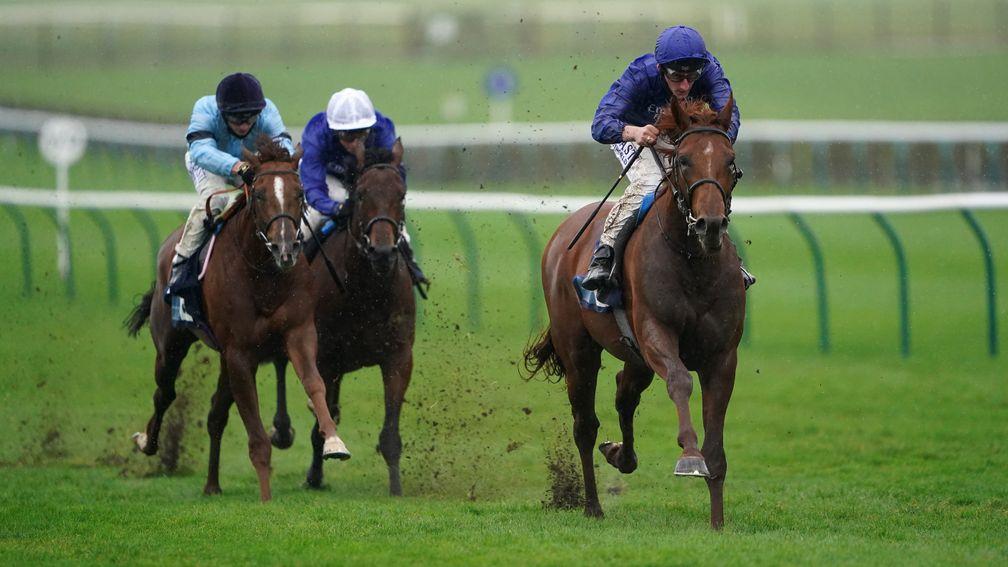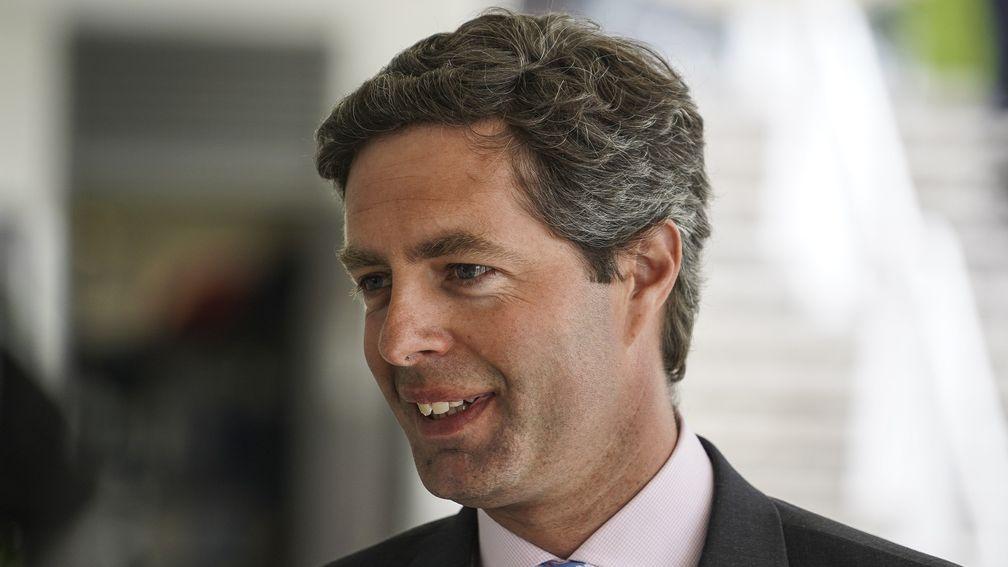- More
'A really important initiative' - the two-year-old series with staying power
Andrew Scutts on the springboard for Cracksman, Stradivarius and Hurricane Lane

Cracksman, Hurricane Lane and Stradivarius. They have a few obvious things in common, but did you know they are also united by being poster-boy graduates of an EBF-backed series that returns on Friday?
The 2022 sire/dam confined two-year-old races - the EBF Future Stayers’ Series is the jazzier title - begin at Newcastle and run through to Chelmsford on December 15, with 12 contests in total.
The British branch of the EBF has supported the series for staying-bred juveniles since 2015. The majority are maiden/novice races, with a nursery having been added in 2018. Initially open to the progeny of stallions who had won over ten furlongs or more, the races were opened up, at the BHA’s request, in 2017 to allow progeny of dams who had won over the same trip or further to compete.
The series was in response to a review by the BHA Flat Racing Committee highlighting a lack of opportunities for juvenile staying types and to help meet a goal of further enhancing the stayers’ programme.
Cracksman made his debut in one such contest, the Breeders Supporting Racing EBF Maiden Stakes, on October 19, 2016, running on well to win and dropping a strong hint as to what was to come, namely four Group 1s including two Champion Stakes and joint-world champion status with Winx in 2018.
Back in fourth was Stradivarius, who had already contested a sire-restricted race at Nottingham and was having his second run of a career still going strong and whose CV features a record 18 European Group-race victories.
Four years on from the Cracksman and Stradivarius Rowley Mile match-up, it was Hurricane Lane’s turn to make his debut in a series race and he duly made a fine fist of it, winning by two lengths. He’s not turned out too badly either, becoming a dual Classic winner in the Irish Derby and St Leger.
Newmarket remains part of the series - it hosts the £40,000 nursery on October 19 along with a novice stakes - and its racing director and clerk of the course Michael Prosser says: “The series is a really important initiative and, as results show, has worked out successfully. The chief point is to drive breeders to utilise middle-distance stallions.

“We have the ten-furlong nursery, which is fairly new to the series, and also the novice which Cracksman and Stradivarius ran in, and Hurricane Lane won. The Zetland Stakes on Future Champions’ Saturday has also worked particularly well.
“It’s not just about the juvenile series, it’s part of a broader initiative, really well structured, that encompasses three-year-old races like the Queen’s Vase, Bahrain Trophy and Gordon Stakes. It needs to link in all the way through, to take a horse on that journey.
“It’s about having the different layers, not just Class 1, and the BHA deserves huge credit for putting it together, along with the EBF for the support. The whole project has been a success.”
He added: “If a future owner can see there’s an established race programme, a pathway with some nice prize funds, they will be more inclined to purchase a horse with a middle-distance pedigree and be in it for the long haul.
“Investment is critical, to encourage breeders, and then prospective owners, to view the staying horse as an attractive proposition.”
In its launch year of 2015 the programme contained a mere four races, with the peak coming with 15 in 2018 and 2019. Covid-19 led to the 2020 schedule being reduced but it has bounced back in the right direction since
Between 2015 and 2021, the BEBF allocated £399,000 in prize-money for the races, which not only offer an attractive pot in an era when prize-money is generally quite the opposite but also do their bit when it comes to field-size averages, another area that is very much under pressure.
The 78 races over seven seasons have attracted a total of 657 runners, giving an average of 8.42 per race - so crucially above the magic mark for each-way betting to three places. There are a healthy 13 declarations for Newcastle's race on Friday.

Latest statistics provided by the BEBF reveal there are 67 black-type series graduates, with eight Group 1 winners on the Flat. Hukum, Hypothetical, Line Of Duty and Royal Marine all registered their first wins in a sire/dam restricted race, like Cracksman and Hurricane Lane, while Star Catcher did a Stradivarius in using a series contest as the springboard to a first success.
On top of the Group 1 winners, there are ten Group 2-winning graduates, eight who have gone on to win a Group 3 and a further eight Listed winners. There are two Grade 1 hurdle-winning alumni too, Mengli Khan and Allmankind.
Goodwood provides both the first race on turf in the 2022 series, on September 6, and the most valuable maiden/novice option, at £25,000, and, like his counterpart at Newmarket, the course’s Ed Arkell is a big fan of the concept.
In September 2018, the first five home in the series race at Goodwood were Line Of Duty, Pablo Escobarr, Allmankind, Sir Ron Priestley and Le Don De Vie.
Arkell says: “We’re very happy to support the series and think it’s a great initiative. Supporting stayers’ maidens and those horses who might want a little further at that time of year is really important, for the breed and the industry.
“If we don’t support these sort of initiatives then we’re going to end up with a considerable lack of horses coming through the ranks to run over longer distances as three-year-olds and moving forward.
“The big-name graduates are among the horses showing the concept works, and we’re keen to support these developmental races that allow them to work their way up through the ranks.”

He adds: “We’re very supportive of the EBF, and they’re very supportive of Goodwood, which hopefully shows we’re thinking along the same lines, and I think they do an enormous amount of good - probably underestimated - for the industry as a whole.”
EBF chief executive Kerry Murphy identified “an increasingly worrying bias towards breeding and buying for speed” in launching the programme of opportunities for future middle-distance and staying champions, and remains convinced they are a vital part of the racing calendar.
“This series has undoubtedly been a success and, with a graduate like Cracksman proving an exciting stallion prospect, has already exceeded our expectations," she says.
"The EBF celebrates its 40th anniversary next year and nurturing a series like this is exactly what it should be doing.”
What is the EBF?
The European Breeders’ Fund was established in 1983 by a group of British owner-breeders in response to a prize-money funding crisis in the two-year-old programme.
It has gone on to provide more than €150 million, and counting, in prize-money across member countries of Britain, Ireland, France, Germany and Italy, and puts back into racing an extra €5m per year via sponsorship.
The EBF’s remit is to financially support races that promote and develop a horse’s career, back organisations whose purposes include assisting and improving the breeding of thoroughbreds, and provide financial support for equine research beneficial to the thoroughbred.
How is it funded?
For each stallion registered, there is a yearly fee to ensure all of his progeny conceived in the northern hemisphere are EBF-eligible. The fee, called the Standard Contribution, is equal to the average value of nominations sold to him that year.
There are discounts, and also a sliding scale whereby stallions likely to have more runners will contribute more to the fund.
Stallions standing outside Europe can be registered; for those in the northern hemisphere there is a payment equal to 50 per cent of the advertised fee, and in the southern it’s 25 per cent.
What does it support?
Once EBF-qualified, a horse is eligible to run in any EBF race throughout Europe. More than 80 per cent of two-year-old races are confined to EBF-eligible horses, so nearly 1,000 races a year.
The British EBF backs a range of developmental races and special projects, with the aim of enhancing the diversity of the domestic race programme, such as fillies’ handicaps, conditions races and high-value maiden and novice races.
Special projects include the sire/dam restricted juvenile races confined to horses with staying pedigrees.
Jump racing support focuses on programmes for fillies and mares.
Catch up with some our recent Bloodstock Big Reads
Cracksman and his cracking start to life at stud
James Thomas explains the magic of Monceaux
It was billed as 'the death of racing' - instead it opened a bright new future
Why Germany's breeding industry has staying power
Aisling Crowe gets the latest from Noel and Valerie Moran at Bective Stud
Published on inNews
Last updated
- Telescope, sire of Supreme Novices' hero Slade Steel, relocates to Foxwood Farm
- Royal Ascot winner Arizona on the move as Coolmore sire joins the exodus to Turkey
- Something different for Burrows as Group 1-winning trainer consigns at the Tattersalls Cheltenham December Sale
- Breeding right to Blue Point sells for €430,000 on Darley winning bid platform
- Classic hero Metropolitan set for strong home support with Etreham busy at the sales
- Telescope, sire of Supreme Novices' hero Slade Steel, relocates to Foxwood Farm
- Royal Ascot winner Arizona on the move as Coolmore sire joins the exodus to Turkey
- Something different for Burrows as Group 1-winning trainer consigns at the Tattersalls Cheltenham December Sale
- Breeding right to Blue Point sells for €430,000 on Darley winning bid platform
- Classic hero Metropolitan set for strong home support with Etreham busy at the sales